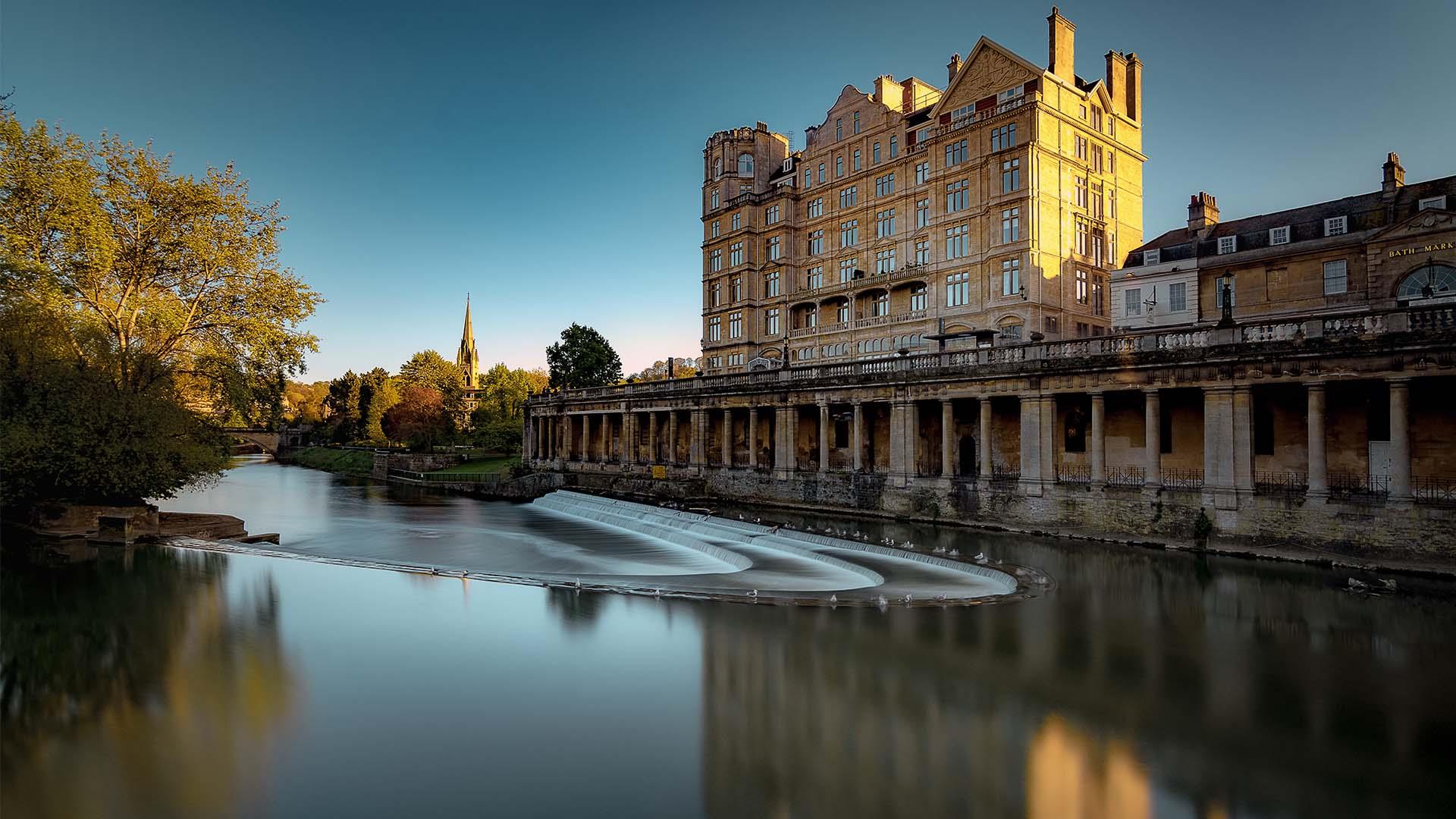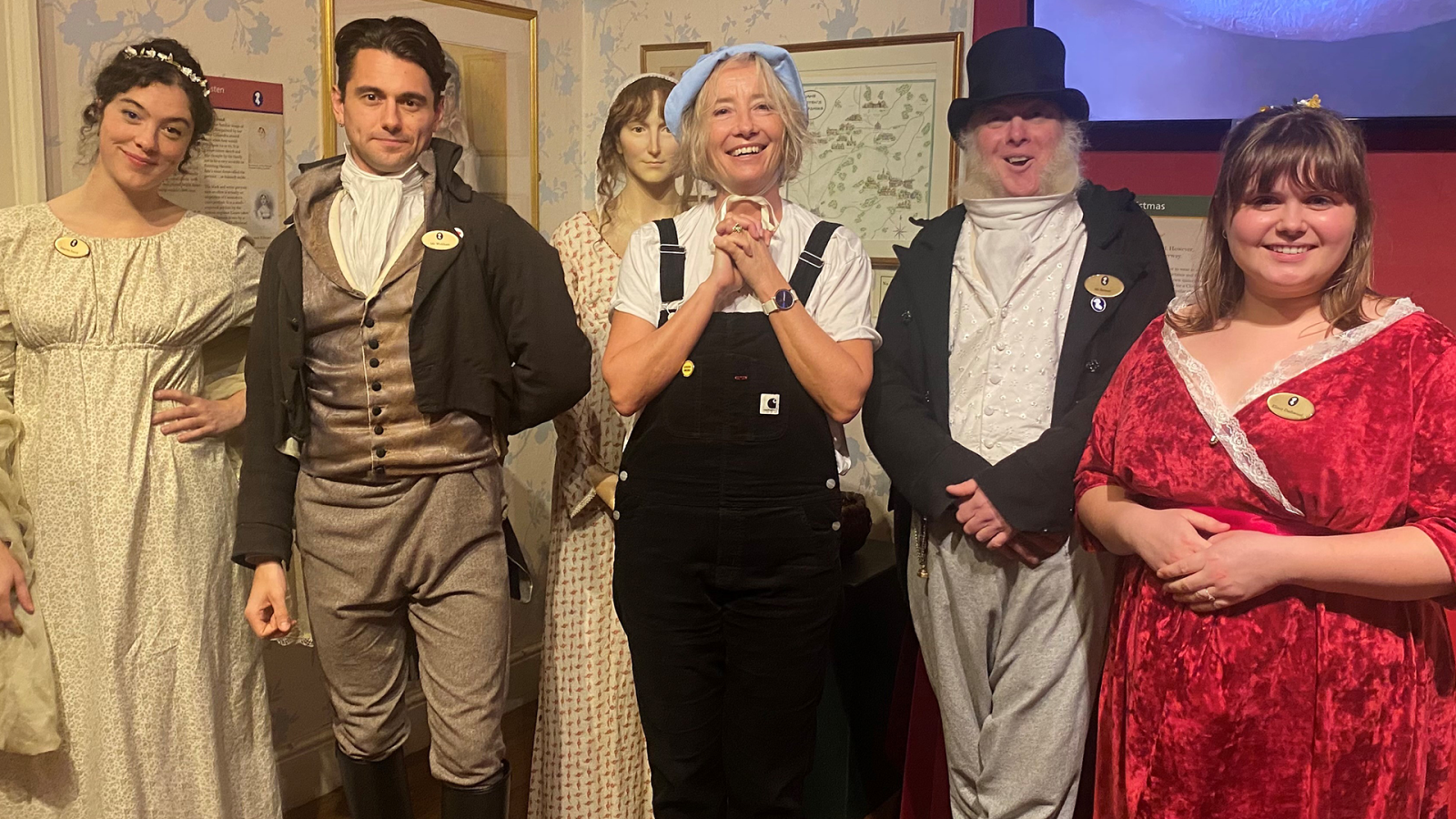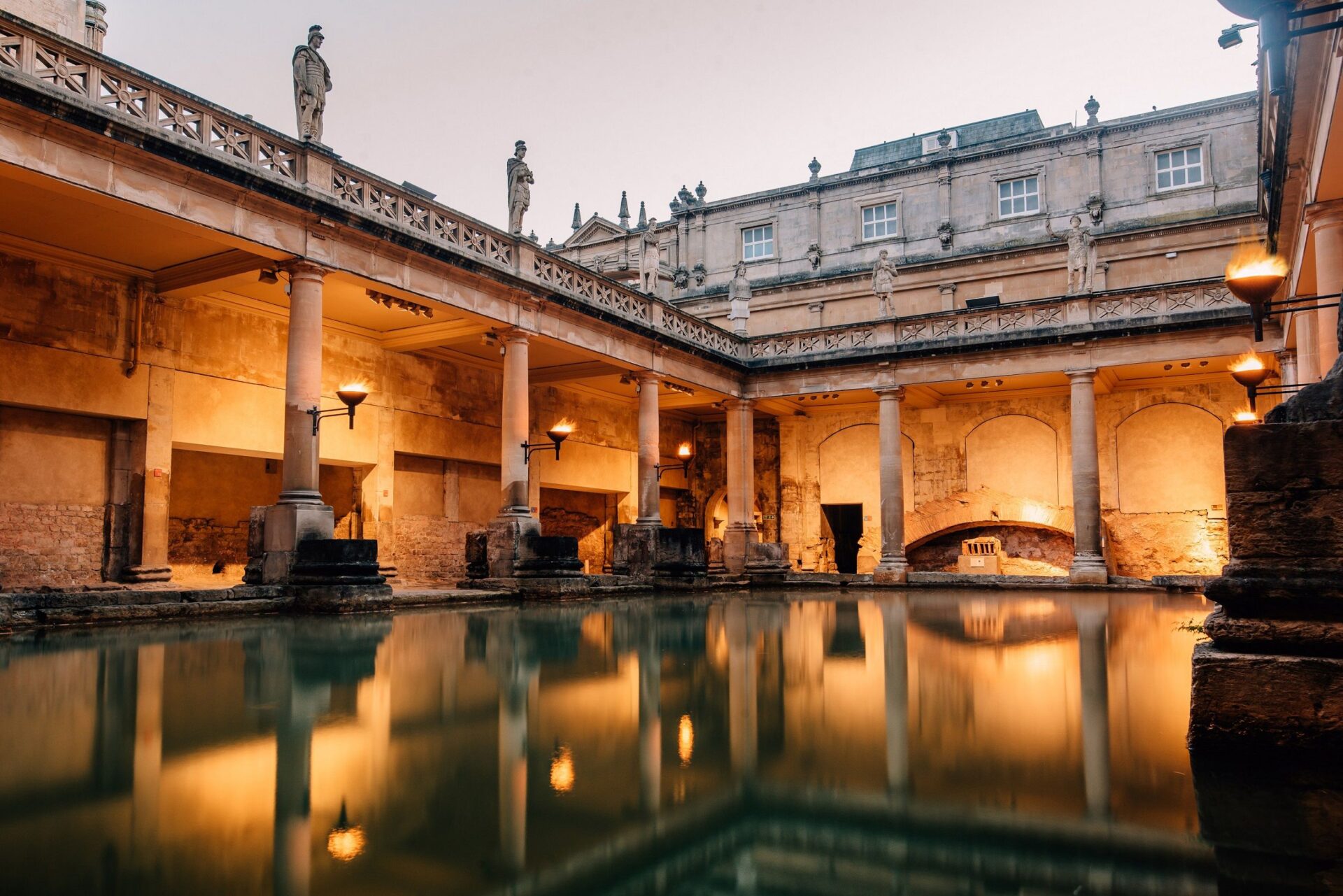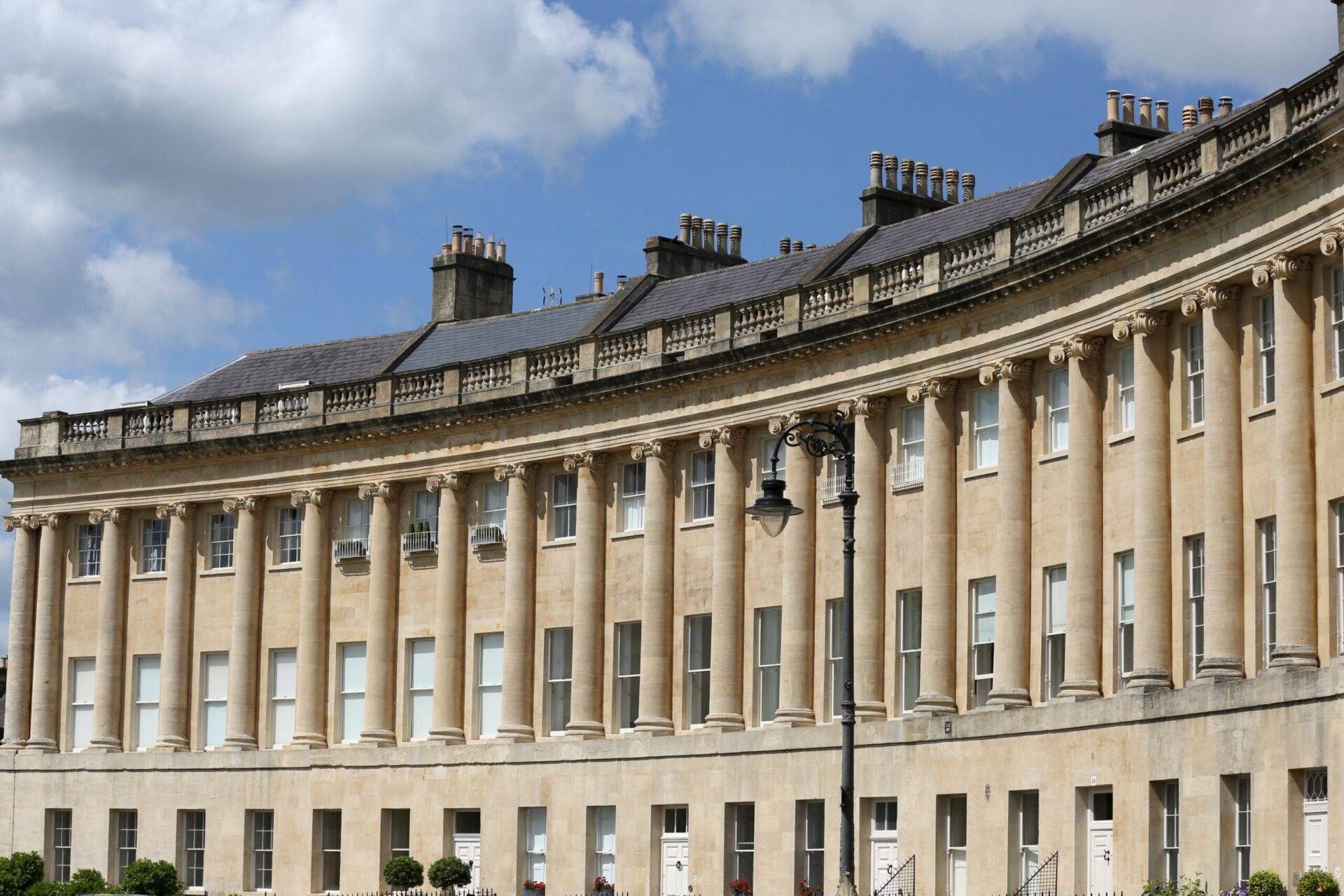
Walking along the Avon River, the sound of the cascading current recedes into the background as one admires the surrounding architecture. As the sunset fades, light shines on the city’s neo-classical buildings, casting a yellow hue on the already honey and cream-colored buildings. It’s moments like these which reveal the beauty that the city of Bath offers to both locals and tourists. This beauty makes it nearly impossible to find the words to properly describe Bath. In fact, the words of novelist Jane Austen from one of her novels stating, “Oh! Who can ever be tired of Bath?” may be the only way to encompass the liveliness and tranquility that Jane Austen’s Bath has to offer.

Bath is a well-known architectural wonder for tourists as its buildings, shopping boulevards, and natural beauty add to the atmosphere of the city. Another notable association Bath has besides its lavish attractions is its connection to the acclaimed writer Jane Austen. Austen’s first visit to Bath in 1797 led to numerous other visits until her final stay in 1806. For admirers of Austen, a visit to Bath offers a chance to revisit her steps and travel back into the pages of her novels. As such, through a collaboration with VisitWest, Beau Monde Traveler has had the opportunity to explore Bath’s intriguing connection to Jane Austen in all of its glory.
Bath’s Historical Background

The rich history of Bath dates back to 43 BC when the Romans invaded Britain. During the invasion, the Romans discovered a natural hot spring. The settlers decided to build the Roman Baths on top of this spring. The Roman Baths served as an important thermal spa, utilized by visitors across the Roman empire. Patrons of the bath house went for both relaxation and physical therapy purposes. Another vital purpose of the site was for religious purposes. In fact, the Romans built a temple for the Goddess Sulis Minerva with a grand courtyard to worship in. In 70 AD, the town named Aquae Solis emerged but it wouldn’t be until the 18th century for Bath to become established as a luxurious city. George III transformed the area into the lavish town of Bath, designed around neoclassical Palladian buildings.
"In fact, the words of novelist Jane Austen from one of her novels stating, “Oh! Who can ever be tired of Bath?” may be the only way to encompass the liveliness and tranquility Bath has to offer"
The Jane Austen’s Bath and the Jane Austen Centre

To trace the footsteps of Jane Austen in Bath, an important first stop is the Jane Austen Centre. The Jane Austen Centre offers guests a look into Austen’s life within Bath as well as an exhibition with costumes from movies adapted from her famous novels. Costumed actresses portraying celebrated characters from Austen’s works guide groups through an informative section of the centre. This section includes a detailed speech on the history of Austen’s family and their whereabouts within Bath and the surrounding area. Then, guests are guided to a gallery containing possible portraits of the novelist as her actual features are unknown. At this point, guests are welcome to fully explore the centre which includes behind-the-scenes images, scripts, and costumes of adapted movies such as the 2007 Persuasion film.

Beyond this point, guests can watch a short film that traces the steps of Austen within Bath through her letters and known addresses. This delightful exploration prepares one to explore the remaining section of the centre with various examples of the time period in which Austen lived in Bath. An immersive perfume bottle collection along the wall truly adds a sense of going back into Austen’s time as visitors are invited to smell the various scents utilized by ladies during Austen’s era. Near the end of the centre, visitors are welcomed to try on period-appropriate costumes for a photo opportunity which adds a new level of excitement. To round out the experience, a room of paper and quills gives visitors the chance to write a letter as Austen would have written to her family and friends. As a whole, the Jane Austen centre is a must-stop for admirers of Austen’s work and life.
The Pump Room

Adjacent to the Roman Bath House is the Pump Room, a location that Jane Austen specifically mentions in her novel Northanger Abbey. Acting as a social hub during Austen’s time in Bath, The Pump Room is still an acclaimed spot for patrons to enjoy a delightful Afternoon Tea, brunch, or an evening dinner. The interior of the Pump Room features Corinthian columns along the perimeter walls which are a classic cream color. A dazzling chandelier in the middle of the room catches one’s attention and portrays the elegant atmosphere within the room. Deep red drapery along the windows and within the chair cushions further add to the ambiance. Moreover, the Pump Room Trio with members Lucy Hewson on the violin, Matthew Gresswell on the cello, and Imogen Windsor on piano fill the room with the tranquil sounds of their orchestra group. From the interior neo-classical design of the Pump Room to the orchestra that plays as patrons dine on decadent desserts and sandwiches, it’s clear why Austen admired the establishment as the social heart of Bath.
"The Jane Austen Centre offers guests a look into Austen’s life within Bath as well as an exhibition with costumes from movies adapted from her famous novels"
The Roman Baths

Located next door to the Pump Room, is the Roman Baths which during Austen’s time, were off-limits for patrons to enjoy the hot springs. However, the Roman Baths are an experience that anyone visiting Bath must visit as the archeological masterpiece of the ancient bath is a marvel to see. As one walks into the reception hall, the beauty of the site emerges first by the elegant dome ceiling, featuring images of the four seasons. After marveling at the impressive dome, guests are guided by an audio tour to explore every inch of the vast area which includes the Great Bath, East Baths, Laconicum, Circular Bath, West Baths, and the collections within them featuring archeological discoveries. One could spend an entire day exploring the various areas of the Roman Baths as there is so much to see and learn. At the heart of the Roman Baths is the Great Bath, an expansive rectangular pool of sea green colored water, that is surrounded by pillars and a second-story wrap-around terrace along with a barrel-vaulted hall of 20 metres tall. The Great Bath is fed by a natural hot spring with steam slowly rising off of the spa water. Guests aren’t allowed to touch the hot spring as the water is unfiltered however, the end of the audio tour does allow guests to try the filtered spa water from a fountain. The water has a truly unique taste as it contains 43 different minerals, and as visitors sip on the spa water, their tour of the Roman Baths comes to a close.
Other Notable Austen Stops
A trip to Bath with Jane Austen in mind cannot be complete without visiting Swithin’s Church. This Anglican church is the location in which her parents Cassandra and George were married in 1764. Swithin’s Church is also the home of Austen’s father’s final resting place as he passed away in 1805 in Bath. Within this church the unification of life and death can be found, allowing visitors to witness the most intimate moments of the Austen family’s existence. For a further dive into Austen’s numerous stays within Bath, a free audio guide titled “ In the Footsteps of Jane Austen Audio Tour” can provide an immersive experience of exploring Bath through Austen’s eyes.

The city of Bath is truly an elegant city filled with impressive architecture, unique afternoon tea spots as seen in the Pump Room, and most importantly, a connection to the gifted novelist Jane Austen. Walking through the streets of Bath, one can experience what it is like to be in a Jane Austen novel and see the city through her eyes. Explore the Jane Austen Centre, indulge in a decadent Afternoon Tea spread at the Pump Room, and walk along the ancient rooms of the Roman Baths to experience the time-capsule of Jane Austen history that Bath offers.
















